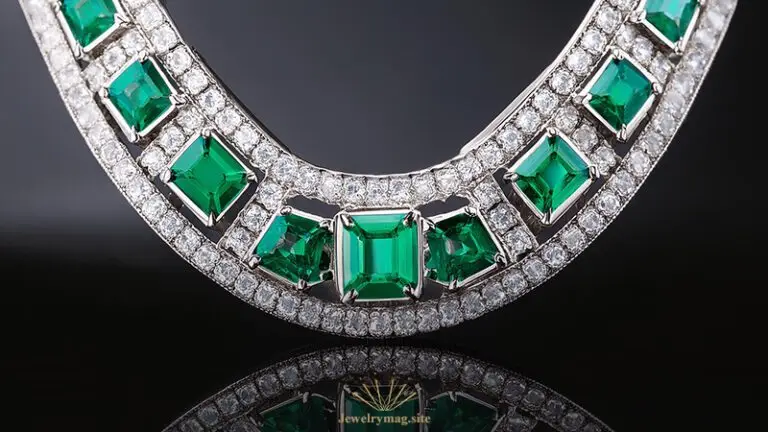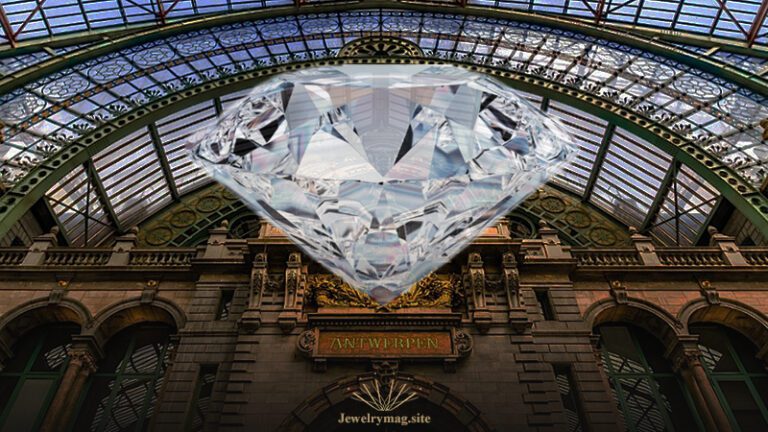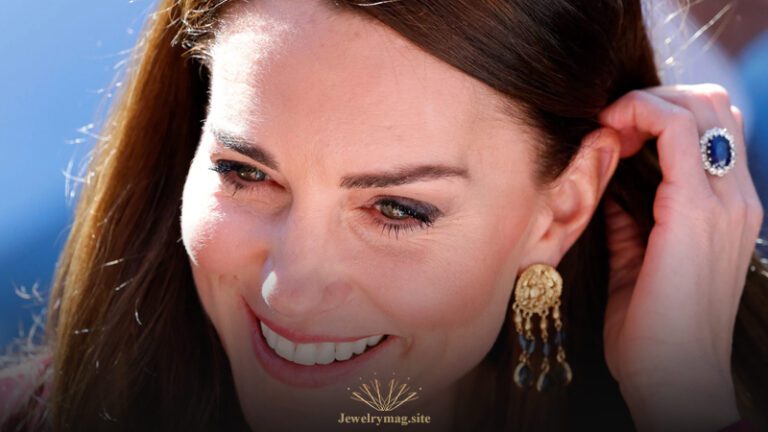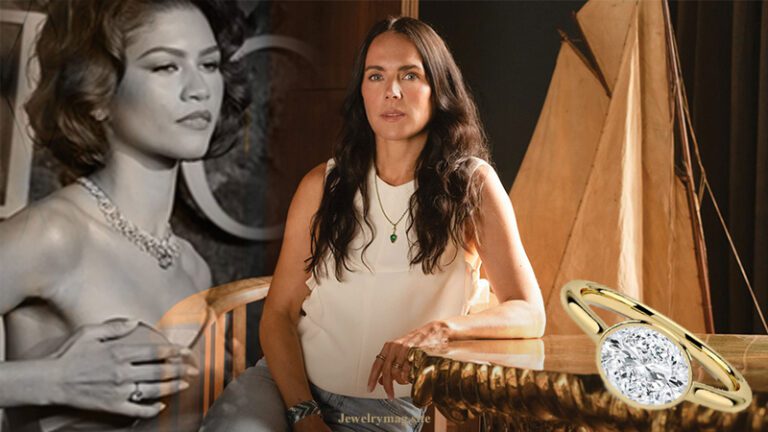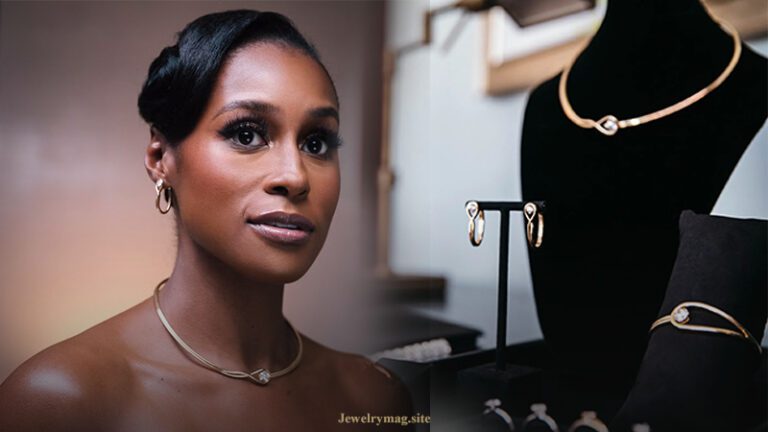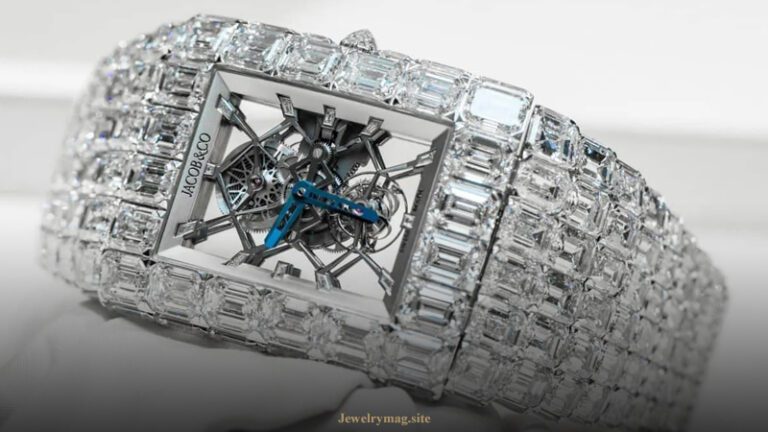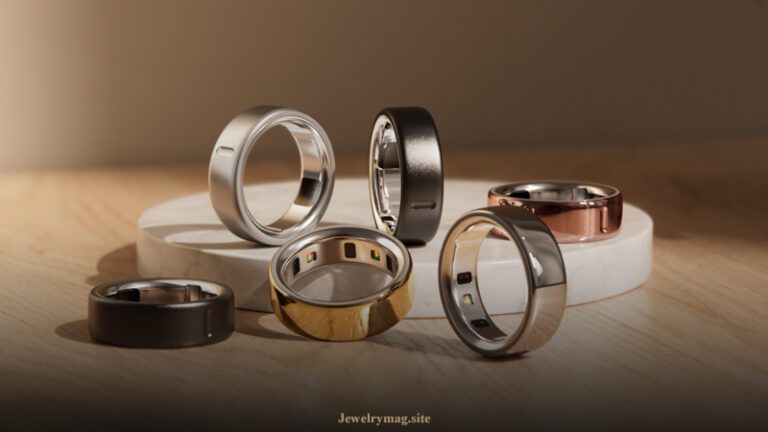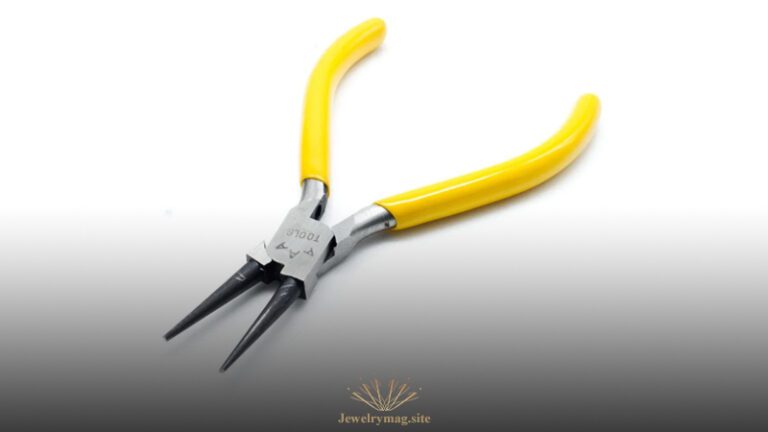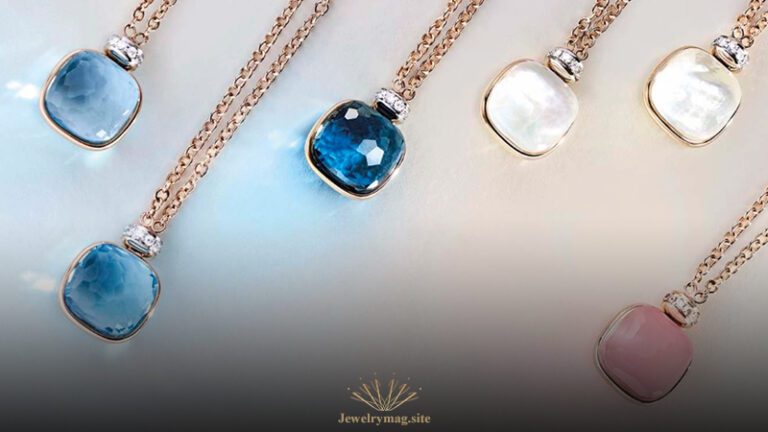The world of jewelry design is undergoing a transformation, fueled by the integration of artificial intelligence (AI). Traditionally, jewelry design has been a highly skilled craft, blending creativity with technical precision. However, the introduction of AI-powered tools is not only streamlining the design process but also opening up new avenues for innovation.
In this comprehensive guide, we will explore how AI is influencing jewelry design, its advantages, challenges, and what the future holds for this dynamic fusion of technology and artistry.
The Rise of AI in Jewelry Design
AI is reshaping various industries, and jewelry design is no exception. The application of AI in this field ranges from automating repetitive tasks to assisting in creative processes. AI-driven software and algorithms are enabling designers to push the boundaries of their imagination, offering design suggestions, analyzing trends, and even predicting customer preferences.
What is AI-Powered Jewelry Design?
AI in jewelry design involves the use of machine learning algorithms, generative design models, and other advanced technologies to aid in creating intricate jewelry pieces. The process typically involves feeding the AI with data related to past designs, customer preferences, and market trends. The AI then processes this information to generate unique designs or enhance existing concepts.
There are two primary ways AI is utilized in jewelry design:
- Generative Design: AI algorithms create multiple design options based on input parameters like material type, shape, and style preferences. This provides designers with a wide range of options to choose from or modify.
- Predictive Analysis: AI analyzes market trends, customer feedback, and buying behavior to suggest designs that are more likely to appeal to target audiences.
The Evolution from Handcraft to AI-Enhanced Design
Jewelry design has always been a craft rooted in tradition. Skilled artisans would spend years perfecting their craft, learning the delicate balance between creativity and technical skill. However, the introduction of computer-aided design (CAD) systems marked a significant shift, allowing for more precision and efficiency. AI takes this evolution a step further, incorporating machine learning and data analytics into the design process.
While traditional methods are irreplaceable for certain bespoke pieces, AI is increasingly complementing human creativity, enabling faster prototyping, better accuracy, and access to a broader range of design inspirations.
Benefits of AI in Jewelry Design
AI offers several advantages in the jewelry industry, not only for designers but also for businesses and consumers. Below are some of the key benefits:
1. Enhanced Creativity and Innovation
One of the most significant benefits of AI in jewelry design is its ability to enhance creativity. AI-driven software can generate countless design possibilities, often presenting unique and unconventional ideas that a human designer might not consider. This expands the creative horizon, encouraging designers to experiment with new forms, patterns, and materials.
For instance, AI algorithms can take inspiration from nature, architecture, and even historical art to create intricate and one-of-a-kind designs. By analyzing vast datasets, AI can also suggest design elements that align with current fashion trends, allowing designers to stay ahead of the curve.
2. Streamlined Design Process
The jewelry design process traditionally involves several stages, from sketching initial ideas to creating prototypes and final models. AI can significantly speed up this process by automating repetitive tasks and generating multiple design iterations within minutes. Designers can adjust parameters like material, size, and style to see instant variations of a design, leading to quicker decision-making and reduced time to market.
3. Customization and Personalization
Today’s consumers seek personalization in everything they purchase, and jewelry is no exception. AI can analyze individual customer preferences, including their style, favorite materials, and previous purchases, to create highly personalized designs. With AI’s ability to learn and adapt, it can generate customized suggestions that resonate with the customer’s unique tastes, leading to a more personalized shopping experience.
For example, AI algorithms can recommend specific gemstone cuts, metal finishes, or even engraving styles that suit a customer’s preferences, helping jewelers offer bespoke products at scale.
4. Cost Efficiency and Resource Optimization
Jewelry manufacturing involves the use of precious metals and stones, making it essential to minimize waste. AI can optimize material usage by designing pieces that require fewer resources while maintaining aesthetic appeal. Moreover, AI-powered tools can predict demand trends, helping businesses manage inventory more effectively and reduce the costs associated with unsold stock.
5. Improved Accuracy and Precision
AI brings unparalleled precision to the design process. Whether it’s the intricate patterns in a bracelet or the symmetrical facets of a gemstone, AI ensures that designs are accurate to the smallest detail. This precision not only enhances the quality of the final product but also reduces errors during production, leading to fewer defects and returns.
6. Market Insights and Trend Prediction
AI’s ability to analyze vast amounts of data makes it an invaluable tool for market research. By examining social media trends, customer reviews, and purchasing behavior, AI can predict emerging trends in jewelry design. This insight helps designers and businesses stay ahead of the competition by offering styles and collections that are in line with consumer preferences.
Applications of AI in Jewelry Design
The applications of AI in jewelry design are diverse and continue to evolve. Here are some of the most prominent ways AI is being used in the industry:
1. Generative Design Algorithms
Generative design is an AI-driven process where designers input design criteria, and the software generates numerous design variations based on those parameters. These algorithms can create highly complex and intricate designs that would be challenging to conceive manually. Designers can then refine and select from these AI-generated options, blending human creativity with computational power.
2. Virtual Try-Ons and Augmented Reality (AR)
AI, combined with augmented reality, is transforming the shopping experience for jewelry customers. Virtual try-on solutions allow users to see how a piece of jewelry would look on them without physically wearing it. AI-powered AR applications analyze facial features, skin tone, and even hand shapes to offer accurate visualizations of how rings, earrings, or necklaces would appear. This enhances the customer experience and reduces the chances of returns.
3. AI-Powered Customization Platforms
Several jewelry brands have introduced AI-driven customization platforms where customers can design their pieces. By inputting preferences for style, metal, gemstones, and other elements, the AI generates a unique design tailored to the customer’s taste. This interactive experience not only engages customers but also builds brand loyalty.
4. Trend Analysis and Design Recommendations
AI tools can scan social media platforms, fashion blogs, and e-commerce sites to identify popular jewelry styles and predict upcoming trends. This data is invaluable for designers and brands looking to create collections that resonate with their target audience. By staying in tune with consumer preferences, businesses can better align their offerings with market demand.
5. Automated Quality Control
AI is also playing a crucial role in quality control during jewelry production. Machine learning models can inspect jewelry pieces for defects, ensuring consistency and high-quality output. These systems can detect even minute flaws that might be missed by the human eye, improving overall product quality and reducing waste.
Challenges and Ethical Considerations
While AI offers numerous advantages, its integration into jewelry design also comes with challenges and ethical considerations that need to be addressed.
1. Balancing Creativity and Automation
One of the main concerns is whether AI could stifle human creativity. While AI can generate countless design variations, there is a risk that over-reliance on algorithms could lead to homogenized designs lacking the personal touch and emotional depth of handcrafted pieces. Striking the right balance between using AI as a creative aid while retaining the designer’s unique vision is crucial.
2. Data Privacy and Security
AI relies heavily on data, especially when it comes to personalized design recommendations. This raises concerns about data privacy and security. Jewelry brands must ensure that customer data is handled responsibly and comply with relevant regulations, such as GDPR, to protect consumer information.
3. Job Displacement Concerns
The increasing automation brought by AI has sparked debates about its impact on jobs. In the jewelry industry, there is concern that AI could replace certain roles, such as junior designers or CAD technicians. However, it is more likely that AI will complement rather than replace human workers, creating new opportunities for those who can work alongside AI and leverage its capabilities.
4. Environmental Impact
While AI can optimize material usage, there is also the concern of energy consumption associated with running complex algorithms. Jewelry brands need to consider the environmental footprint of adopting AI technologies and explore ways to offset this impact, such as using energy-efficient servers or supporting sustainable practices.
The Future of AI in Jewelry Design
The future of AI in jewelry design is promising, with advancements likely to further enhance creativity, efficiency, and customer engagement. Here’s what we can expect moving forward:
1. Integration of AI with 3D Printing
3D printing is already being used in the jewelry industry for prototyping and manufacturing intricate designs. The combination of AI and 3D printing could revolutionize production, enabling fully automated, end-to-end workflows. Designers could input their vision into an AI system that generates a design, which is then directly sent to a 3D printer for manufacturing. This seamless integration could lead to faster production times and lower costs.
2. Smarter and More Adaptive Algorithms
As AI continues to evolve, its algorithms will become smarter and more adaptive. Future AI systems could not only generate designs based on static criteria but also learn in real-time from ongoing market trends and customer feedback. This dynamic approach could result in even more personalized and trend-conscious designs.
3. AI-Powered Sustainability Initiatives
Sustainability is becoming a critical focus in the jewelry industry. AI could play a significant role in promoting ethical sourcing and reducing waste. For example, AI could be used to trace the origin of gemstones and ensure they are sourced from conflict-free regions. Additionally, AI could optimize supply chains to minimize the carbon footprint of jewelry production.
4. Collaboration Between AI and Artisanal Craftsmanship
Rather than replacing traditional craftsmanship, AI is likely to work in tandem with it. Hybrid approaches that combine AI-generated designs with handcrafted techniques will likely become more prevalent. This fusion of technology and tradition could result in a new category of jewelry that retains the authenticity of artisanal craftsmanship while benefiting from the efficiency and innovation brought by AI.
Top 5 AI Tools for Jewelry Design
AI is revolutionizing the jewelry industry, offering innovative tools to streamline design, enhance creativity, and improve efficiency. Here are five of the top AI tools or best ai for jewelry design (best ai model for jewelry) to consider:
1. Fotor – AI Jewelry Generator
- Key features: Text-to-design, 3D modeling, inpainting
- Why it’s great: Offers a user-friendly interface and generates a wide range of designs based on text prompts.
2. StarryAI
- Key features: Image generation, style transfer, upscaling
- Why it’s great: Creates stunning and unique jewelry designs through AI-powered image generation.
3. Blng
- Key features: Personalized design, customization, free to use
- Why it’s great: Allows users to create custom jewelry pieces based on their preferences and offers a free platform to explore designs.
4. Lumiere 3D
- Key features: 3D video generation, immersive visualization
- Why it’s great: Creates stunning 3D videos of jewelry designs, providing a realistic and engaging customer experience.
5. RhinoJewel
- Key features: AI-powered design, CAD integration
- Why it’s great: Combines AI with traditional CAD software for a powerful design toolset.
Conclusion
AI is undeniably transforming the world of jewelry design, offering a wealth of opportunities for innovation, customization, and efficiency. While challenges exist, the benefits of incorporating AI into the design process are profound. By enhancing creativity, streamlining production, and offering deeper insights into consumer preferences, AI is helping jewelry designers and brands stay competitive in a rapidly evolving market.
The future of AI in jewelry design is not about replacing human creativity but rather augmenting it. As technology continues to advance, we can expect even more exciting developments that will push the boundaries of what is possible in jewelry design. Whether you’re a designer looking to explore new creative avenues or a consumer seeking personalized pieces, AI is set to play a key role in shaping the jewelry of tomorrow.
In the dynamic intersection of technology and artistry, AI has opened up a new era where the fusion of data and design can produce jewelry that is not only beautiful but also meaningful and tailored to the individual. As the jewelry industry continues to embrace this technological revolution, the possibilities are truly endless.

